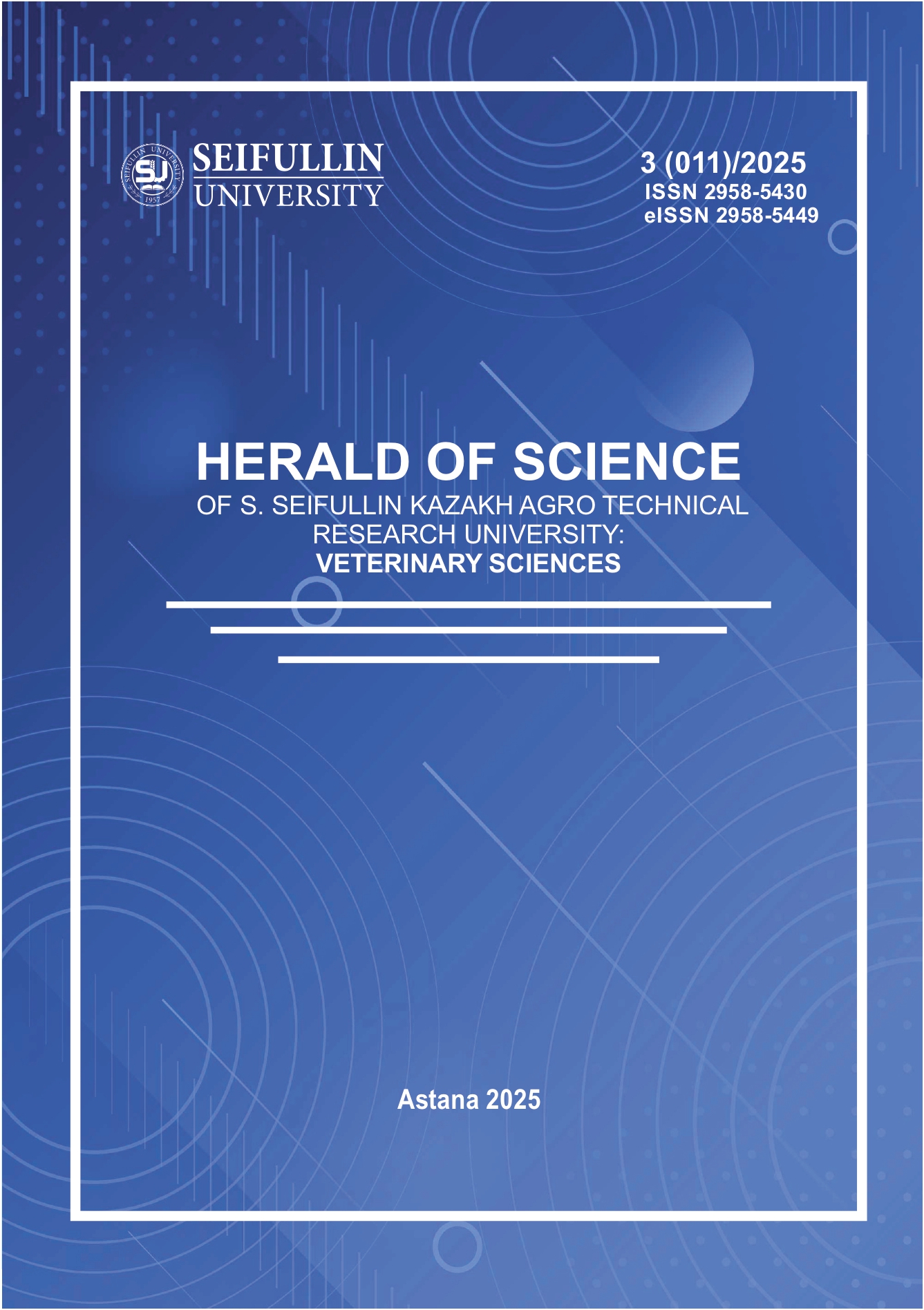Isolation and characteristics of keratinophilic fungi from the objects of the external environment
DOI:
https://doi.org/10.51452/kazatuvc.2025.3(011).1961Keywords:
dermatophytosis; keratin; keratin hydrolysate; keratinophilic fungi; environmental objects; soilAbstract
Background and Aim. There is a growing number of fungal skin infections in animals worldwide. The frequent detection of mold fungi in association with dermatomycetes, or as a mono infection, indicates exogenous sources of infection. The aim of this study is to isolate and characterize keratinophilic fungi from soil and other environmental sources.
Materials and Methods. A total of 198 environmental samples (soil, litter, feed, scrapings from feeders, fences, paddocks, and walls) were collected from Akmola, Almaty, Karaganda, and Pavlodar regions of Kazakhstan. Hair bait technique was used to isolate keratinophilic fungi. Cultural and morphological features were studied on universal dense agar and microscopically at ×10 and ×40 magnifications. Biochemical properties were determined using Hiss media, Christensen medium with 40% urea, and media with milk and gelatin.
Results. Ecologically significant saprophytic keratinophilic micromycetes were identified in the samples: Trichophyton spp. – 7%, Phoma spp. – 7%, Marquandomyces spp. – 7%, Penicillium spp. – 13%, Lecanicillium spp. – 7%, Fusarium spp. – 7%, Alternaria spp. – 7%, Aspergillus spp. – 6%, Filobasidium spp. – 13%, Mucor spp. – 26%. Among isolates, 85% utilized sucrose, 77% maltose, 69% glucose, and 62% mannitol. Urease activity was observed in 70%, and protein degrading enzyme activity (gelatin and casein) in 50% of isolates. All strains showed varying degrees of keratin assimilation. The most severe hair damage was caused by Trichophyton spp., Penicillium spp., Alternaria spp., and Aspergillus spp., which formed dense mycelial sheaths or conidia, leading to thinning and lysis of hair.
Conclusion. The wide distribution of saprophytic keratinophilic fungi in the environment suggests that animal infections are caused not only by classical dermatophytes like Trichophyton, but also by opportunistic keratin-degrading molds.

